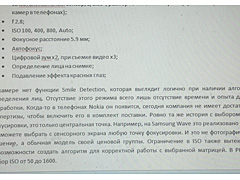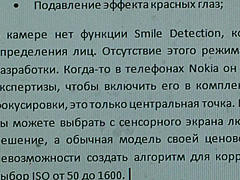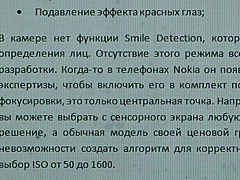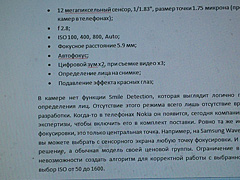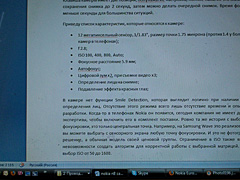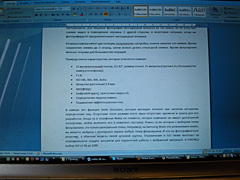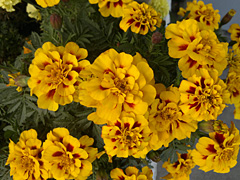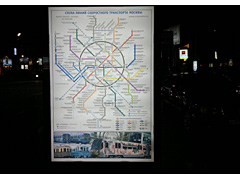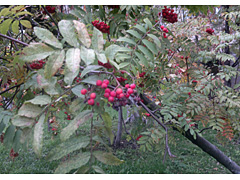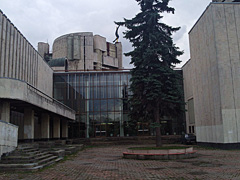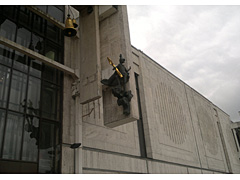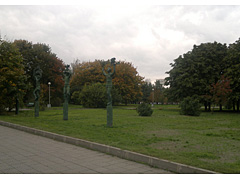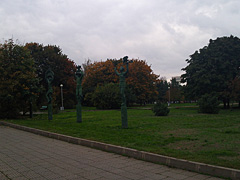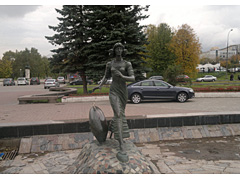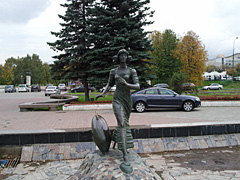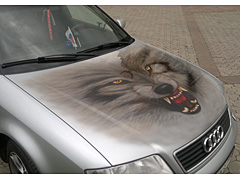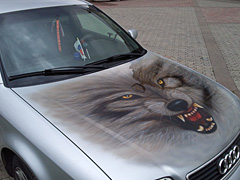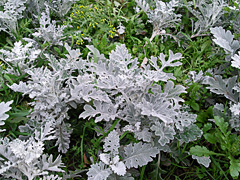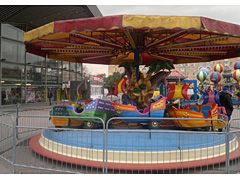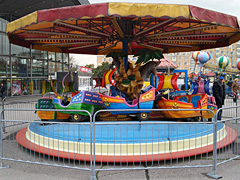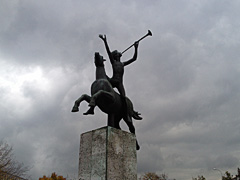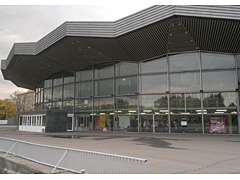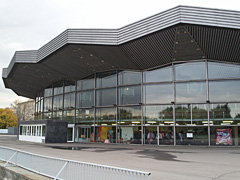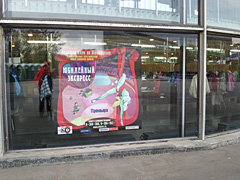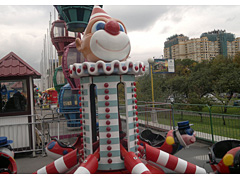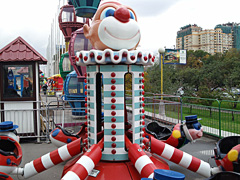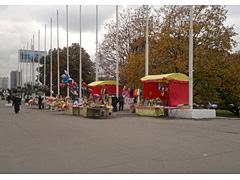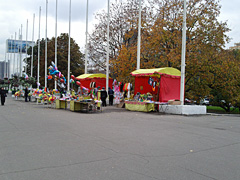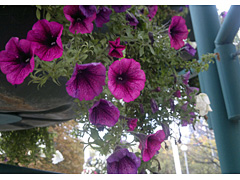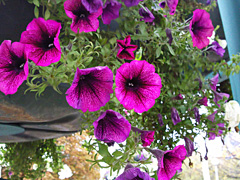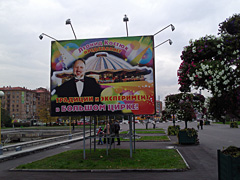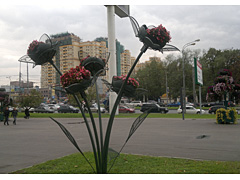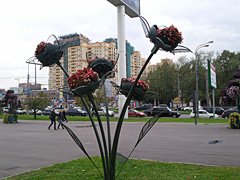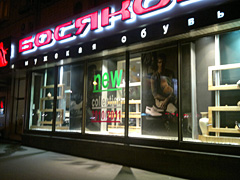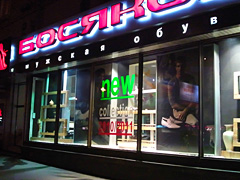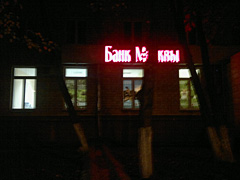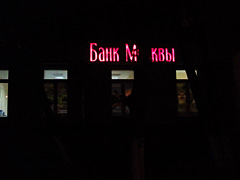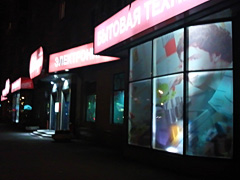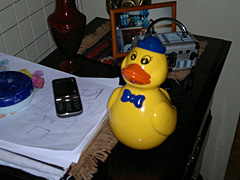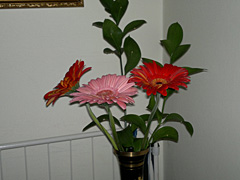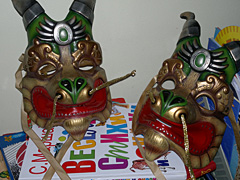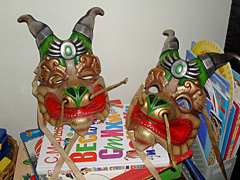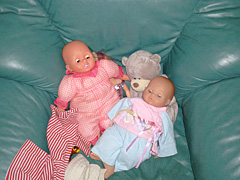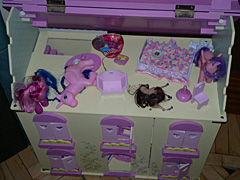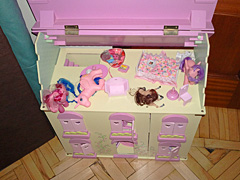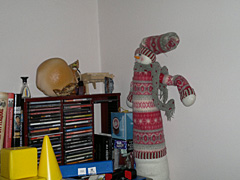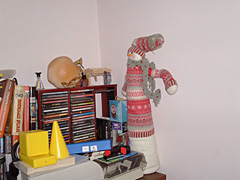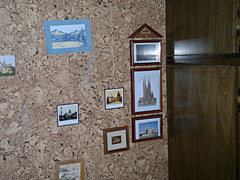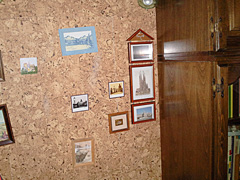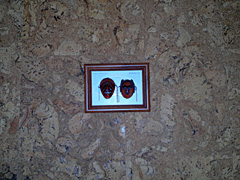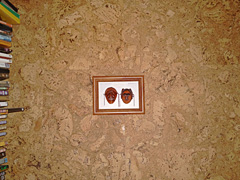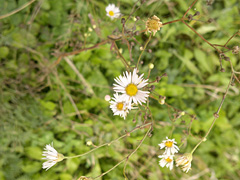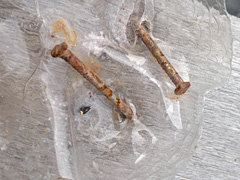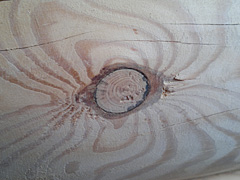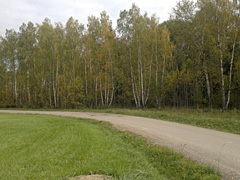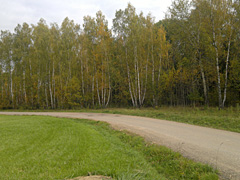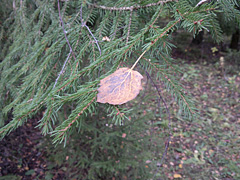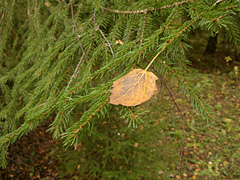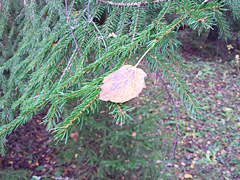Nokia N8 Camera: Comparison with Other Phones
All the pictures made for these articles are made in Auto mode with all factory presets standard Ц the way the vast majority of users are using camera phones in the vast majority of situations.
Nokia says the 12-megapixel camera in the Nokia N8 is a revolution, as it is for the first time ever that a phone is comparable to a digital camera. For Nokia, it is the first camera of this class, yet for the market on the whole it is no big deal Ц e.g. recall the PIXON12 from Samsung as well as the Sony Ericsson Satio. The models appeared in the retail more than a year ago, but it is only now that Nokia decided to release its own photo flagship. At this exact moment, the megapixel horserace is over and the manufacturers are not betting on megapixels anymore but working on image processing algorithms and optics.
Unfortunately, in terms of technology, Nokia started lagging behind the market, and the company has to resort to catchy slogans, marketing and PR to compensate for its lack of expertise. And there have been plenty of flashy phrases as far as the Nokia N8 camera is concerned. However these days, any technology consists of two parts Ц i.e. hardware and software. On its own, having the latest hardware is not enough for the best result. It is the software part that matters the most. Let me give you an example. A regular military motor torpedo boat is not that expensive unless it has an arms control system installed. Its cost can reach up to 90 per cent of the final price of the boat with full firepower. It is the computers and software that determine the quality of the military unit.
The same is true for phones. Buying a large sensor and installing it on a phone is not enough. The sensor won't be able to reveal its potential if the image processing algorithms are obsolete. Unfortunately, Nokia has never had adequate camera software developers; the company hasn't devoted much attention to cameras and has always lagged behind the competition. An attempt to create such algorithms at one stroke, without prior expertise, makes no sense. However, Nokia believes that doesn't matter much, it is the hardware installed that matters, which implies the sensor and optics in this case. Any shortcoming in terms of picture quality will be made up for by marketing and PR, that is what the company is betting on.
Having laid a claim on the photo flagship title, Nokia expected the device to be compared to the best products of the previous season Ц e.g. the PIXON12, Sony Ericsson Satio. However, common people do not follow the corporate logic and started comparing the device with cameras used in ordinary phones, and they got some interesting results. In my opinion, that is the right way to go, and the comparison needs to be progressive. For instance, I picked up the IPhone 4 as a flagship from Apple that doesn't have an outstanding camera and the Samsung Wave as a typical product in the price segment with a regular 5-megapixel camera without any special features. For dessert, I have the PIXON12 as a model that appeared on the market long before the Nokia N8. It is going to be a fair comparison of the retail version of the Nokia N8 with the models that became available on the market a while ago and don't have any high-water marks in terms of their camera capabilities (the PIXON12 is exactly one year old, although as far as its camera features are concerned, it is still second to none).
Technical Characteristics of the Nokia N8 Camera. What It Can and Cannot
The camera is located on the rear side of the device. The module juts out a bit and doesn't have a mechanical lid, which has been discarded due to some unsatisfactory working results in earlier models (e.g. scratches in the Nokia N97, dust). Lacking the lid is not bad, for example, there is none in the PIXON12 or the majority of regular phones. The camera is protected with tempered glass that is scratch resistant. That suffices to protect the camera.
Xenon flash is located nearby. Unfortunately, there is no LED flash there. According to Nokia's explanation, they didn't have enough room left in the N8 for another flash unit. Top photo solutions from other companies use dual Xenon and LED flash. LED flash is not that important when taking regular pictures, but it matters a lot for indoor video recording. On the other hand, it is sometimes better even for taking still images.
The camera key has two positions: press it halfway for setup, press it all the way down to take a picture. It takes up to 2 seconds to save a picture before you can take another one. The focusing time is less than a second in most cases.
Below you can find the technical characteristics of the camera:
- 12-megapixel sensor, 1/1.83", pixel size: 1.75 microns (compared to 1.4 microns in the majority of cameras in regular phones);
- f 2.8;
- ISO 100, 400, 800, Auto;
- Focal length: 5.9 mm;
- Focusing distance: from 10 cm (macro) or 20 cm (automatic);
- Autofocus;
- Digital zoom: х2 or х3 for video;
- Face recognition;
- Red-eye reduction;
The camera doesn't have Smile Detection, which would be quite logical once the regular face recognition algorithm is present. The lack of the mode is justified by the lack of time and developing experience. It is to appear in Nokia phones at some point, but today the company doesn't have enough expertise to make it part of the bundle. The same is true for the focusing point options, as there is only one, central point, available. For instance, in the Samsung Wave one can pick any point on the sensor screen to focus on. And the latter is not a photo solution but just a regular model in its price segment. The restricted ISO range is also due to the lack of an appropriate algorithm for the sensor. The PIXON12 allows one to adjust the ISO level from 50 to 1600.
Unfortunately, designing cameras has never been a priority for Nokia and the company is reaping the fruits of its efforts these days. Digital zoom is restricted to x2 because the picture gets noisy at the higher levels and Nokia is not able to handle that. Although that is typical for the majority of mobile phone sensors, Samsung did manage to tweak the image processing algorithms to allow for digital zoom of up to x4 in the PIXON12. However, one needn't go that far; just take a look at the pictures of a laptop screen with this article taken with the Nokia N8 and PIXON12.
Nokia N8:
Samsung PIXON12:
Can you see the difference? Obviously, Nokia can say that digital zoom up to x2 is good enough. One can't argue with that, albeit zoom up to x4 is always better than that up to x2. I believe one won't argue with that either.
To avoid going back to the discussion of the "natural" color on the Nokia N8, I will let a company representative speak, according to whom, the automatic white balance uses a special algorithm to adjust colors that may be handy in particular situations. That is true. However, it is also true that the algorithm doesn't work correctly all the time.
Here is a link to the respective question and answer to it.
Comparison with the Apple iPhone 4
They did a good job at Engadget by comparing the pictures taken with the N8 and Apple iPhone 4 and showing that those are not that different for an average user. Arguably, some pictures even look better if taken with the iPhone 4 thanks to the after effects, whereas the "natural" Nokia N8 colors are not that pleasant to the eye. Certainly, if you are going to retouch each and every picture in Photoshop, then the Nokia N8 makes an obvious choice. For regular customers, the Nokia N8 is not significantly better than the Apple iPhone 4.
Engadget's Comparison
Below you can find a pair of pictures taken by me indoors, where the large sensor used in the Nokia N8 is supposed to knock down the Apple iPhone 4 with its fairly average camera. YetЕ What happened? Did I mix up the pictures? In the picture taken with the iPhone, not only can one see every little detail on the laptop screen, including the icon captions, but also the stand, which was my actual target, is in focus. Fantastic. I need to mention that the Nokia N8 shoots at a resolution of 9 megapixels out of the box, which personally I didn't expect. It is logical to set the resolution to the maximum, but they were too shy to do that for some reason. Nevertheless, it has no impact on the image quality and the comparison is quite fair.
|
Nokia N8
|
Apple iPhone 4
|
 |
 |
Here is a cup of tea on the table. Again, fantastic. Take a look at the detalization of the objects nearby; the Nokia N8 camera loses again and significantly. Eh? I'm starting to get upset.
|
Nokia N8
|
Apple iPhone 4
|
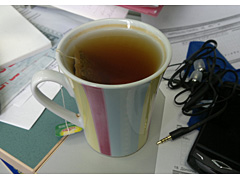 |
 |
Finally, there is at least one pair of more or less comparable pictures, where the Nokia N8 is not that much of a loser.
|
Nokia N8
|
Apple iPhone 4
|
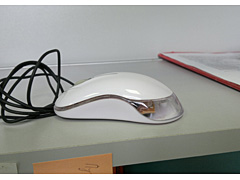 |
 |
After that, I decided to take a picture of some pencils to see how the material's texture can be reproduced. Oops. This doesn't seem like a proper comparison, since the Nokia N8 camera is simply not capable of taking pictures at a range of 20 cm without compromising on the quality of nearby objects. You can see the difference with your own eyes.
|
Nokia N8
|
Apple iPhone 4
|
 |
 |
It is not always true that the Nokia N8 is capable of reproducing natural colors. In the pictures above, it is the iPhone 4 that delivers natural colors, not the other way round. That is the first proof that there is nothing special about the Nokia N8 as far as its camera is concerned. Below, you can find even more evidence for that.
Comparison with Samsung Wave
It is surely an unfair one as Wave features an ordinary 5 MP camera, which has never been claimed to be the best solution in the world of mobile phones. It is fairly standard and meets the expectations of the majority of users. The latter genuinely believe that they do not need more. 12 MP with Carl Zeiss optics and the largest sensor competes here with a traditional Samsung camera installed in the greater part of devices from Korea. Let's see who wins?
To add independent reviews I carried out one experiment. 10 people were offered to look at pictures you see in comparison section and choose the one they liked the most. It was a blind test, but I admitted that the pictures were taken by two different cameras with 12 MP and 5 MP. At the end I did not get much data to analyze, because the votes were evenly split. Nobody guessed 12 MP camera shots. If you forget about marketing and advertising of this mega camera you will not find much difference from shots taken by ordinary handsets. Nevertheless, we should analyze the comparison in bigger detail.
All pictures are shown as they are. Unfortunately, Nokia N8 has an automatic picture rotation feature and some shots are different, but it has nothing to do with details and the overall impression from a photo. Look and analyze yourself.
In the top left hand corner of a Wave picture my finger accidentally covered the lens during shooting. Apart from that this picture shows all subtleties of both cameras. In a Nokia N8 shot the foreground is blurred, but the grass on the left and cars in the background are in focus. Wave fared slightly worse as the right side is more sharp with the object in front. Who is the winner? In terms of general detail Nokia N8 is better, but both cameras successfully dealt with the composition. Savvy consumers, who know that phone camera pictures are necessary for viewing on the handset itself or a PC, will regard both shots as equal. Nokia N8 has no tangible advantage to declare that its shot is superior.
|
Nokia N8
|
Samsung Wave
|
 |
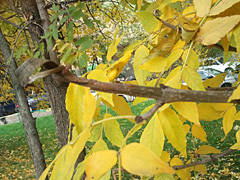 |
In the shot of a leaf Nokia N8 automatically concentrated on the foreground and ignored everything else. Samsung Wave handles the entire shot and all objects are sharp. I like both shots, but the one from Nokia N8 is more interesting.
|
Nokia N8
|
Samsung Wave
|
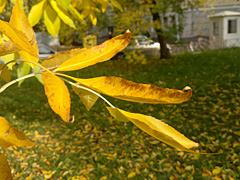 |
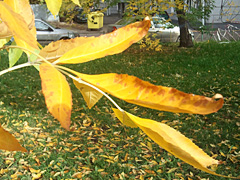 |
Such shots on Nokia N8 are signs of luck rather than good judgment. Its camera traditionally fails to concentrate on the foreground and favors objects at the back. Look at another picture of leaves with the roles slightly reversed. A Wave shot deals well with the foreground and shows leaves at the back. In Nokia N8 the foreground is completely blurred.
|
Nokia N8
|
Samsung Wave
|
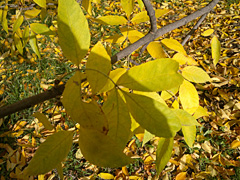 |
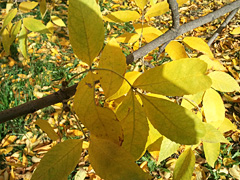 |
To support my hypothesis I will throw in some more shots.
|
Nokia N8
|
Samsung Wave
|
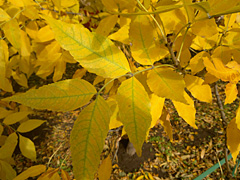 |
 |
We can follow it with close range shots as well.
The shot of a wall is not interesting, because both cameras performed equally. There is no difference worth mentioning.
|
Nokia N8
|
Samsung Wave
|
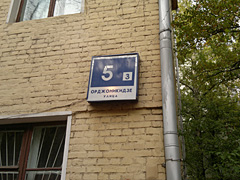 |
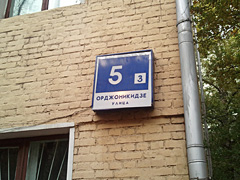 |
A road sign was the object of this shot. Both variants are equally good.
|
Nokia N8
|
Samsung Wave
|
 |
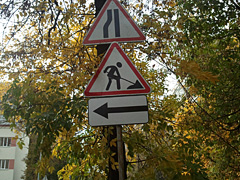 |
I was curious how the two cameras would tackle bright colors, for example a red car. Whether the color would be changed for a brighter picture? In both cases the color remained the same, but N8 wins due to higher resolution, more details and the picture looks better on a large screen.
|
Nokia N8
|
Samsung Wave
|
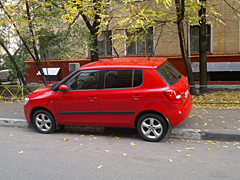 |
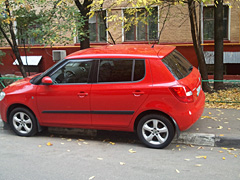 |
I even do not know what to say. Pictures are comparable, offer the same level of detail and an N8 shot is even smaller in size than the one from Wave. In other words, these shots are equal..
|
Nokia N8
|
Samsung Wave
|
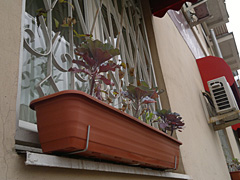 |
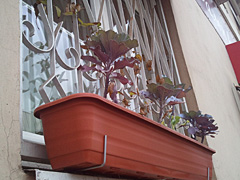 |
In this pair I can hardly make my choice. Wave obviously added color, while N8 faded it a bit.
|
Nokia N8
|
Samsung Wave
|
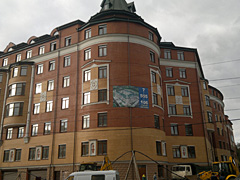 |
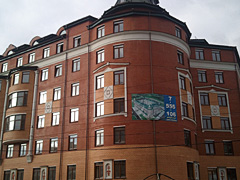 |
When I was taking these shots I had an idea that N8 has blurred close range (less than a meter) pictures due to its design features. I decided to check it by taking a picture of an object located on the wall from a 50 cm distance. The resulting shot is typical of N8 with the loss of detail. The answer is in automated options, which cannot handle such distances well. It was proved by this picture.
|
Nokia N8
|
Samsung Wave
|
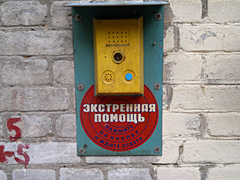 |
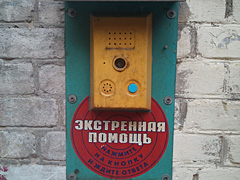 |
Subsequently, long distance shots must be the domain of N8. I take a picture of a building and the signboard and my ideas are confirmed once again. The camera shows good quality and we can read the entire text, while on Wave it is blurred.
|
Nokia N8
|
Samsung Wave
|
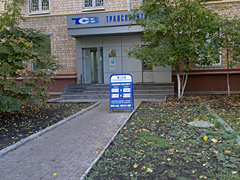 |
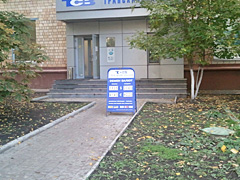 |
Technically, bigger matrix in Nokia N8 should lead to better pictures in bad conditions (inside without a flash). It works well in theory. In real life we have an opposite outcome. Compare these two shots from Wave and Nokia N8. The Finnish product has inferior detail, the text is blurred and the file is smaller. Samsung Wave is an outright winner here.
|
Nokia N8
|
Samsung Wave
|
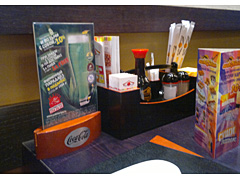 |
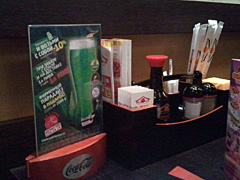 |
This point requires more attention. These are the shots of a well lit building at night. Pictures look similar, but Samsung Wave has a bigger file size. To my mind they are equal.
|
Nokia N8
|
Samsung Wave
|
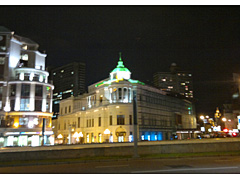 |
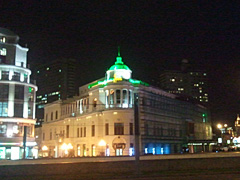 |
Other objects give the same result.
|
Nokia N8
|
Samsung Wave
|
 |
 |
In some cases Nokia N8 provides more detail especially in short distance pictures - Wave cannot do that. Look at the shot of a poster - Nokia N8 renders an ideal shot. On a church picture N8 altered the colors, but gave more detail instead.
Conclusions in comparison with Wave
We discovered several interesting facts about the camera in Nokia N8. It is not good at taking close range shots (50 cm Ц 1 m). At the same time the background is thorough. I would also like to mention that bigger sensor does not give any advantage at night and indoor shots are comparable with those from ordinary phones or even worse at times.
You see the pictures and can compare them. I would not proclaim the camera in Samsung Wave as a photo solution, because it is an ordinary one. The very fact that Nokia N8 is not much in front makes me ask one question. Was Nokia N8 earnestly created to compete with point and shoot cameras?
I like the camera in Nokia N8, but the percentage of good shots is comparable with Wave, Nokia N97 and hundreds of other models. Unfortunately, it is not a breakthrough and we once again get a traditional camera, which was proved by our comparison. Now, let's make it more difficult and compare the camera in Nokia N8 with a photo solution, which appeared on the market a year ago. In terms of features it has a comparable camera and flash.
Comparison with PIXON12
Straight from the box camera resolution was set at 9 MP, but I cannot account for it. After the experiment with Wave I did not change anything and only on my PC I realized that the resolution was automatically set at 9 MP and the comparison with PIXON12 was carried out at the lowered resolution. To avoid ambiguities I made another series of shots in the street, but I was not ready to part with the results of my earlier work. Several shots from the first series were used in comparison. They are quite representative and show both strong and weak points of Nokia N8. We will start with pictures at lowered resolution followed by 12 MP ones.
After the comparison with Samsung Wave I knew all drawbacks of Nokia N8 and could easily compare it with PIXON12. If you want bad results for N8 take pictures at close range. Judge for yourself.
The picture of a broken car became a revelation for me. Apart from blurring details N8 distorted colors. Look at the radiator grille at the maximum zoom. PIXON12 shows grille lines, while in the case of N8 they are blurred, which must be influenced by post-shot algorithm.
|
Nokia N8
|
Samsung PIXON12
|
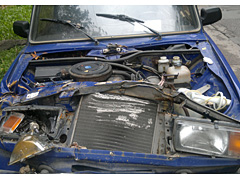 |
 |
Do you remember from your childhood that the sky is blue and the grass is green? By default Nokia N8 treats all colors as faded. The sky is white, the grass is lighter than usual and people in the shot have "worn" clothes of faded shades. PIXON12 on the contrary boosts natural colors. From the real picture both cameras move out in different directions. I do not remember algorithms, which create faded colors on purpose.
|
Nokia N8
|
Samsung PIXON12
|
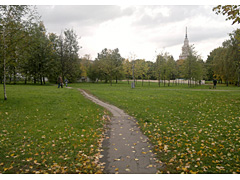 |
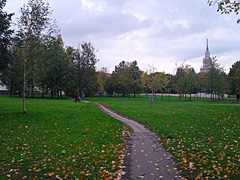 |
This picture shows the sky, which N8 ate into and you cannot see anything between the trees. The lantern was considered a piece of sky by the camera.
|
Nokia N8
|
Samsung PIXON12
|
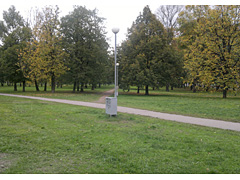 |
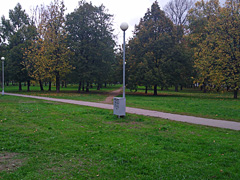 |
People say that bigger sensor decreases the noise and offers more detailed shots, especially in bad light. Hmm. PIXON12 automatically set ISO 100, while N8 provides a weird ISO 150. Pictures do the talking.
|
Nokia N8
|
Samsung PIXON12
|
 |
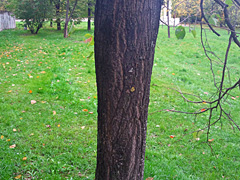 |
I wanted to analyze particular shots, but then I changed my mind when I showed them to my respondents in attempts to find the best ones. Comments are not necessary here. The phone from Samsung may be outdated, but its picture quality is still unrivalled. Several pairs of shots are quite vivid. Independent experts awarded a landslide victory of 10 to 1 in favor of PIXON12. I cannot say more.
Shots at night
Let's compare our camera with PIXON12. I thought Nokia N8 will have an advantage due to bigger sensor. It provides more light, but we have to pay increased noise. Look at the picture of a well lit street. Signs on the opposite side from Nokia N8 are impossible to understand.
|
Nokia N8
|
Samsung PIXON12
|
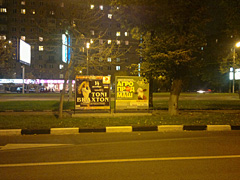 |
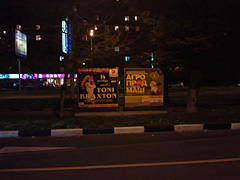 |
I will not say more, because bad conditions did not encourage good results. Both cameras are bad, though PIXON offers higher resolution of signs and fonts. Nokia N8 blurs fonts as you can judge by the shot of a nearby shop.
Xenon flash mode
Nokia claims that in good conditions the flash can work at distances of up to 4.5 meters. I do not know how to recreate such ideal conditions. At a distance of around 1 meter (see the majority of samples below) the power of the flash was never enough. The comparison with PIXON reveals brighter flash of the latter, which offers better detail of background objects, so that book backbones and the vial retain the text. In general the conclusion is disappointing - the xenon flash of N8 can successfully operate at distances less than 1 meter and does not offer better quality anyway. I did not compare this flash with LED ones, but you can do it yourself. The camera of N8 is not a clear winner here either. It happened because developers did not optimize algorithms of the flash mode. It was added here just because it is cool. They did not care to make the flash work at least as well as in last year models.
Macro mode
After one dozen of pictures I found out that while switching into the Macro mode the camera automatically went from 12ћ to 9ћ. Thank you for independence! Shots had to be made again. Several pictures taken from Nokia N8 are really excellent. I like this mode here and the shots are comparable with Samsung Wave.
Vivid mode and one more comparison with PIXON12
Nokia N8 has one additional color mode labeled Vivid Ц the camera adds color and makes pictures more attractive. Prior to this publication I uploaded several comparison shots from N8 and PIXON12. The last resort argument of N8 fans was that we need to activate Vivid mode to improve the quality of optics and pictures themselves. It is not difficult and below you see pictures in the normal mode, in Vivid and PIXON12 shots. Maximum resolution is applied everywhere.
Look at my hand and detail. Shots from PIXON12 are sharper and colors are rendered better (white hand, red jacket, etc.)
The road and forest. Again PIXON12 is sharper and Vivid mode does not help. The quality of pictures in long shots is comparable. It cannot be different, because this mode fits small objects photographed at distances less than 1 meter. I went to the forest looking for mushrooms, moss and branches to highlight strong points of the mode.
Again you cannot say that Nokia N8 provides natural pictures. The mushroom shot proves that PIXON gives more detail and better picture quality. N8 fans often claim that the camera saves more details and you can edit resulting shots on a PC. I am still not impressed. PIXON has a bigger shot size: 3.39 MB against 2.9 MB from N8. Other pictures reveal the same difference and one more argument of N8 fans is shattered.
This is a rare occasion when Vivid mode really helped and contributed to an exceptional shot. To get the similar quality from PIXON it had to be edited on a PC. Here such an intervention was not needed.
Some more shots
|
Nokia N8
|
 |
 |
|
Samsung PIXON12
|
 |
|
Nokia N8
|
 |
 |
|
Samsung PIXON12
|
 |
|
Nokia N8
|
 |
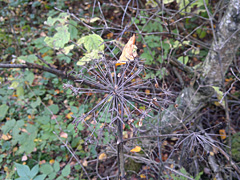 |
|
Samsung PIXON12
|
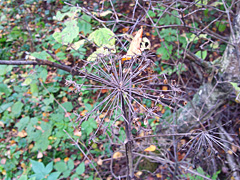 |
|
Nokia N8
|
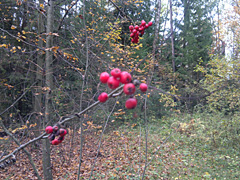 |
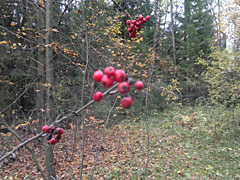 |
|
Samsung PIXON12
|
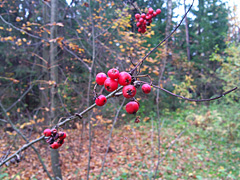 |
|
Nokia N8
|
 |
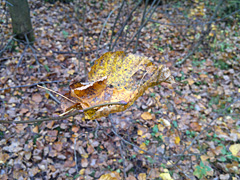 |
|
Samsung PIXON12
|
 |
Video
Nokia equipped the model with 2 microphones Ц one in front and the second Ц at the back. It allows stereo sound recording, which is impressive in a phone and the quality is more than decent (AAC, 48 kHz). The maximum resolution is 1280х720 (up to 25 frames per second) and digital х3 zoom is activated while shooting.
During video recording we again see that the full potential of the sensor was not used. There is no continuous autofocus, which is replaced by Active Hyper Focal Distance. It is a cheap alternative, which makes unnecessary any programming or changing anything in the camera. In fact it is an analogue of EDoF employed in non focus Nokia cameras to take pictures from a set distance to infinity (infinity focus). Applied to video it means that the camera offers sharp quality of objects located at a distance of 60 cm and more. It is not bad and the quality is acceptable. It is not the best solution in this respect anyway.
Look at the video from Samsung Wave (the same resolution with the bitrate of 30 fps, which is not critical) and the same video from Nokia N8.
Video sample Nokia N8 (mp4, 55,3 Mb) >>>
Video sample Samsung Wave (mp4, 60,7 Mb) >>>
I think that apart from the sound you will not see any Nokia N8 advantage. The sound is truly magnificent, but the rest is no better than in Wave. Unfortunately, the camera has no (120 fps) slow motion mode. The company had hardly any money to pay developers and the expertise is not there as well.
Look at several more samples of video from Nokia N8:
Video sample Nokia N8 (mp4, 41,4 Mb) >>>
Conclusions on camera in Nokia N8
Difficulties facing the company cover all areas and the lack of R&D investment in cameras is a prime example of the trend. I hope that my samples are obvious enough to prove that the camera in Nokia N8 offers nothing extraordinary despite the soundbite from Nokia, its marketing and PR departments. This camera nay be a breakthrough for Nokia, but for the market in general it is not a pace setter and offers nothing new. It is painful to hear if you believe that you have the top photo solution. Pictures cannot lie and reveal the truth. N8 fans will defend until the end and they have such a right.
Camera in N8 is a good description of a bigger Nokia picture. Having installed good hardware the manufacturer did nothing to make it work at full capacity. As Nokia scales down all development in cameras at least temporarily it is quite vivid. The company even failed to invest in its top photo solution. The unveiling of Nokia C7/E7 showed that expensive products from Nokia will have no autofocus heralding that the cost cutting has arrived here as well. In Nokia N8 it is so obvious that we have no additional camera modes, settings or algorithms. Little time and money was invested in this camera. Nokia decided that the magical 12 MP and a bigger sensor could do the trick.
To set the record straight I have to say that we still get the best Nokia camera. It is decent and offers above average quality, but is not a top photo solution, which could leave rivals gasping. Such old models as Samsung PIXON12 and Sony Ericsson Satio provide better quality. The difference is easily detected. There are software issues, which will not be solved by Nokia, because of involved expenses. The company is already moving in another direction anyway. Until the last moment I hoped that the main feature of the model would be perfected to get excellent results, but I was disappointed. We get an average result to fool certain consumers and market analysts. Taking into account the fact that this camera costs around И70 you pay an inflated price. It's a pity that Nokia lost its technological leadership.
Do you want to talk about this? Please, go to our Forum and let your opinion be known to the author and everybody else.
Back to the table of contents >>>
Related links
Eldar Murtazin (eldar@mobile-review.com)
 Twitter Twitter  Livejournal Livejournal
Translated by Maxim Antonenko (maxantonenko@ukr.net), Olexandr Nikolaychuk (meiam@inbox.com)
Published — 04 October 2010
Have something to add?! Write us... eldar@mobile-review.com
|

